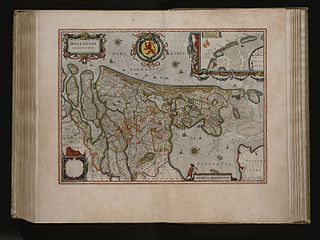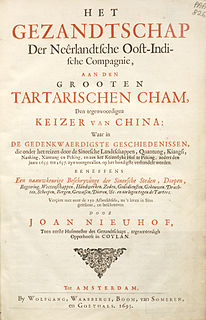 W
WThe Atlas Maior is the final version of Joan Blaeu's atlas, published in Amsterdam between 1662 and 1672, in Latin, French, Dutch, German and Spanish, containing 594 maps and around 3,000 pages of text. It was the largest and most expensive book published in the seventeenth century. Earlier, much smaller versions, titled Theatrum Orbis Terrarum, sive, Atlas Novus, were published from 1634 onwards. Like Abraham Ortelius's Theatrum Orbis Terrarum (1570), the Atlas Maior is widely considered a masterpiece of the Golden Age of Dutch/Netherlandish cartography.
 W
WThe Atlas van Loon was commissioned by Frederik Willem van Loon of Amsterdam. It consists of a large number of maps published between 1649 and 1676:Volumes I to IX: The Dutch edition of Joan Blaeu's Atlas Maior of 1663-1665 Volumes X, XI and XII: Blaeu's city books of Italy, covering the Papal States, Rome, Naples, and Sicily, all of 1663. Volumes XIII and XIV: Two volumes of the French edition of Blaeu's Atlas Maior, covering France and Switzerland, both of 1663. Volumes XV and XVI: Blaeu's Toonneel der Steeden, city books covering both the Northern and the Southern Netherlands, of 1649 Volume XVII: Pieter Goos's Zee-atlas ofte water-wereld of 1676 Volume XVIII: The French edition of Johannes Janssonius's Zeeatlas of 1657
 W
WContes et nouvelles en vers is an anthology of various ribald short stories and novellas collected and versified from prose by Jean de La Fontaine. Claude Barbin of Paris published the collection in 1665.
 W
WAn embassy from the East-India Company of the United Provinces is a book written by Dutch author and explorer Johan Nieuhof. The full title of the English version of the book is An embassy from the East-India Company of the United Provinces, to the Grand Tartar Cham, emperor of China: delivered by their excellencies Peter de Goyer and Jacob de Keyzer, at his imperial city of Peking wherein the cities, towns, villages, ports, rivers, &c. in their passages from Canton to Peking are ingeniously described by John Nieuhoff; Englished and set forth with their several sculptures by John Ogilby. The book served as a major influence in the rise of chinoiserie in the early eighteenth century.
 W
WHistoria Eustachio Mariana is a 1665 work by the Jesuit scholar Athanasius Kircher. It describes his chance discovery of a ruined shrine of the Virgin Mary at Mentorella, the site where tradition held that the Roman martyr Saint Eustace had experienced conversion to Christianity. The book was dedicated to Giovanni Nicola, abbot of the monastery at Vulturalla, and a member of the family of the counts of Poli. It was intended to help raise funds for the restoration of the chapel, and it was Kircher's first topographical work.
 W
WMicrographia: or Some Physiological Descriptions of Minute Bodies Made by Magnifying Glasses. With Observations and Inquiries Thereupon. is a historically significant book by Robert Hooke about his observations through various lenses. It is particularly notable for being the first book to illustrate insects, plants etc. as seen through microscopes. Published in January 1665, the first major publication of the Royal Society, it became the first scientific best-seller, inspiring a wide public interest in the new science of microscopy. It is also notable for coining the biological term cell.
 W
WMundus subterraneus, quo universae denique naturae divitiae is a scientific textbook written by Athanasius Kircher, and published in 1665. The work depicts Earth's geography through textual description, as well as lavish illustrations.